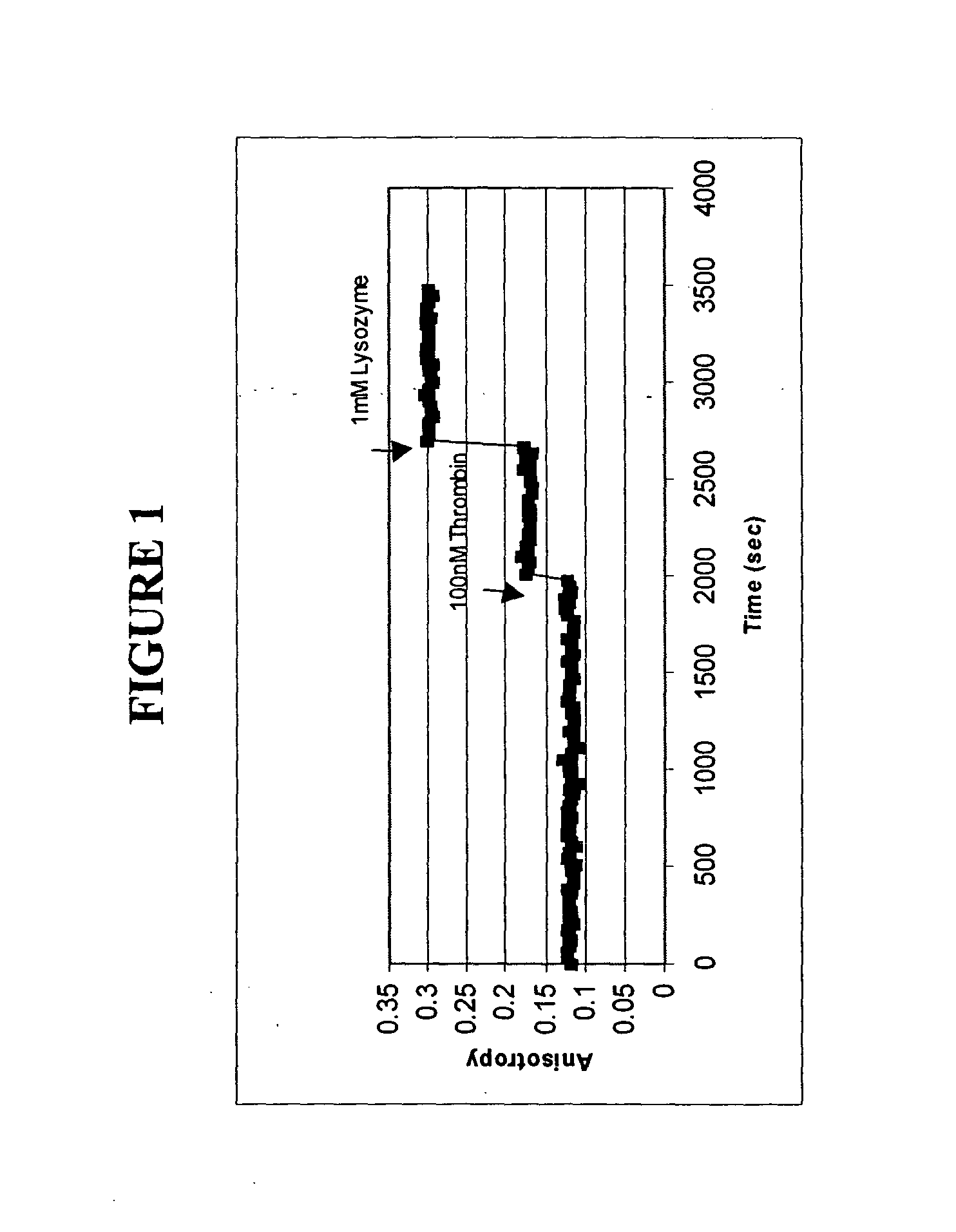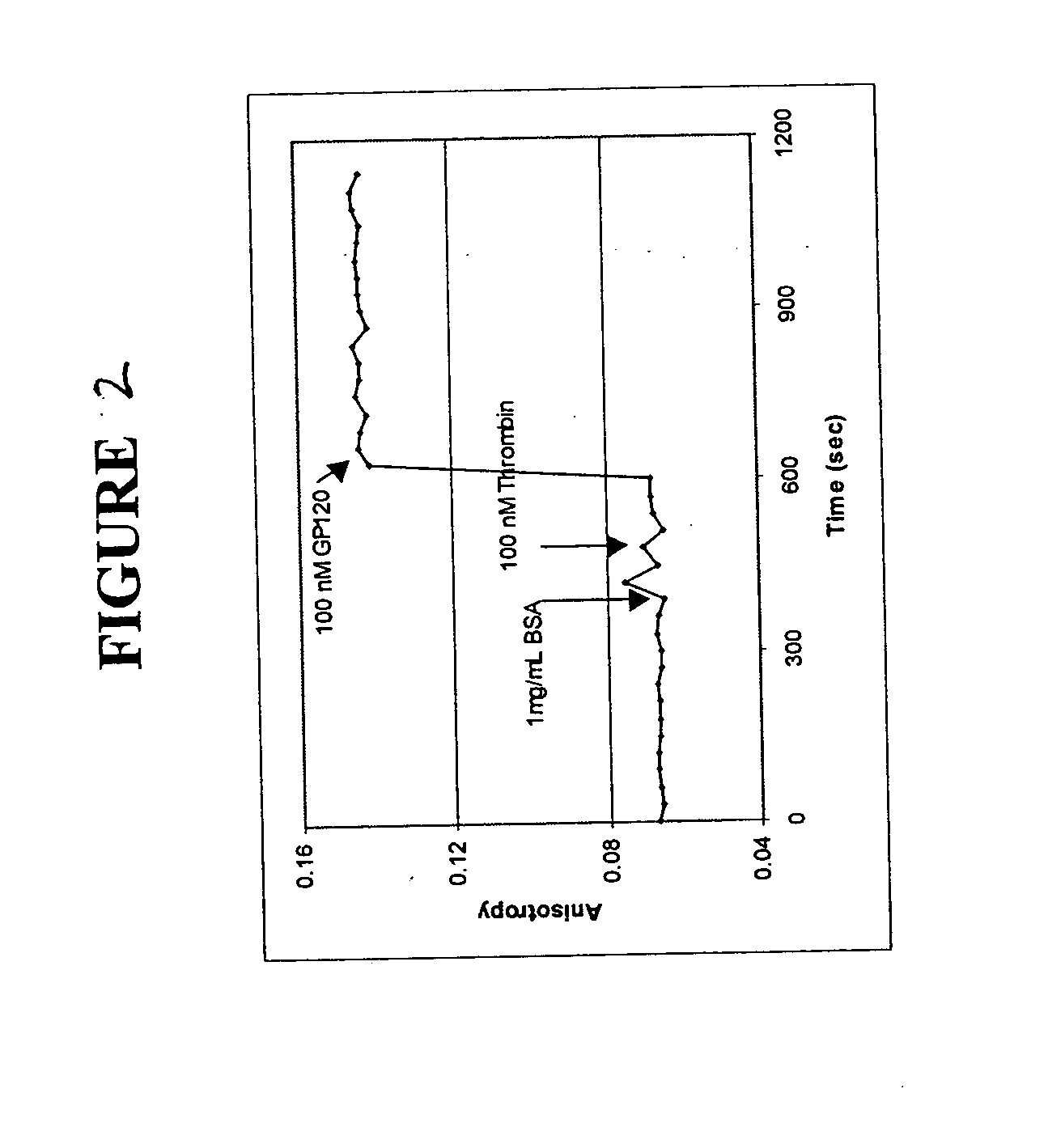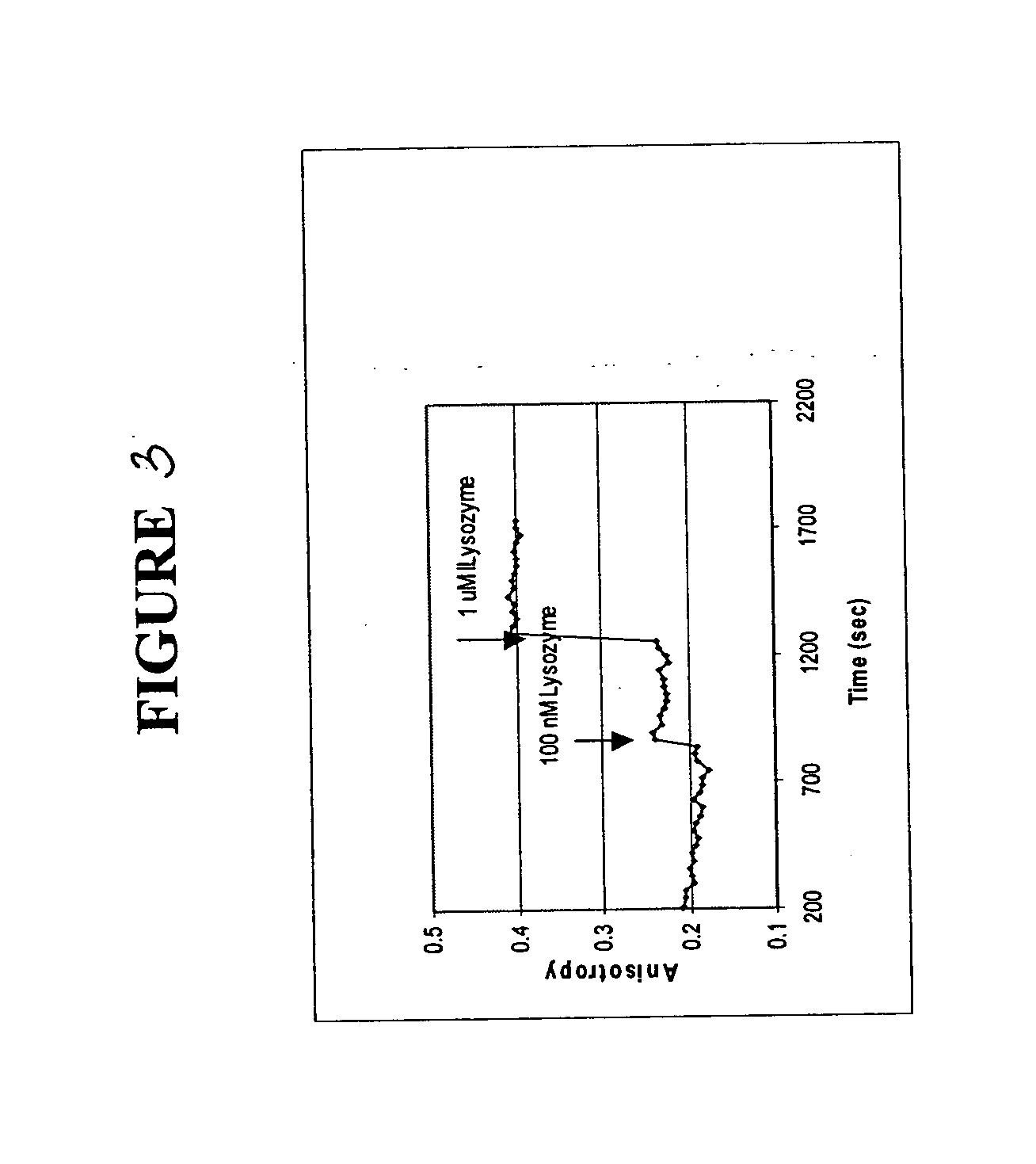Fluorescence polarization assay
a fluorescence polarization and assay technology, applied in the field of fluorescence polarization assay, can solve the problems of limited platforms that have typically been used to identify and quantify aptamers bound to analytes, significant change in fluorescence anisotropy, and molecules capable of molecular recognition, so as to be useful in diagnostic assays
- Summary
- Abstract
- Description
- Claims
- Application Information
AI Technical Summary
Problems solved by technology
Method used
Image
Examples
example 1
[0094] A. Methods for Assessing Binding of Proteins to Aptamer-Coupled Beads
[0095] The polarization anisotropy of dye-labeled aptmers changes with time upon binding to a specific protein. Changes in fluorescence anisotropy of 3 aptamers bound to a solid support upon binding of specific proteins was measured.
[0096] The three fluorophore labeled aptamers used in these experiments were anti-thrombin aptamer (FAM-labeled, a 15 mer), which is specific for thrombin from human plasma, 518-aptamer (FAM-labeled, a 60 mer), which is specific for GP120MN, an HIV-1 protein and 650-aptamer (FAM-labeled, a 60 mer), which is specific for recombinant human FGF basic protein.
[0097] 1. Anti-Thrombin Aptamer for Thrombin
[0098] Binding of thrombin to FAM-labeled anti-thrombin aptamers was measured. 5 micron silica particles were purchased from Bangs Laboratories (OH, USA) and pretreated with 1N NaCl solution at 100.degree. C. for 1 hour. The silica particles were then treated for 30 minutes with 3-amin...
PUM
| Property | Measurement | Unit |
|---|---|---|
| Diameter | aaaaa | aaaaa |
| Anisotropy | aaaaa | aaaaa |
Abstract
Description
Claims
Application Information
 Login to View More
Login to View More - R&D
- Intellectual Property
- Life Sciences
- Materials
- Tech Scout
- Unparalleled Data Quality
- Higher Quality Content
- 60% Fewer Hallucinations
Browse by: Latest US Patents, China's latest patents, Technical Efficacy Thesaurus, Application Domain, Technology Topic, Popular Technical Reports.
© 2025 PatSnap. All rights reserved.Legal|Privacy policy|Modern Slavery Act Transparency Statement|Sitemap|About US| Contact US: help@patsnap.com



